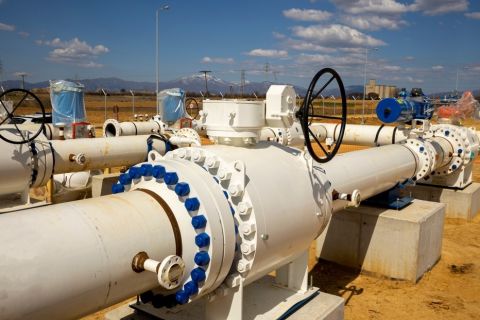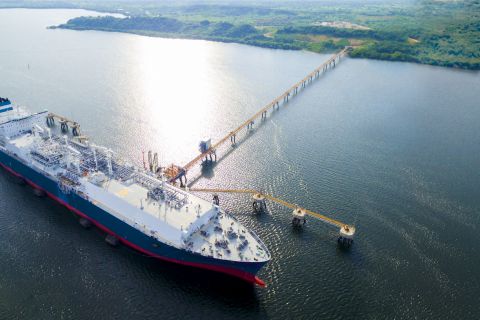International oil and gas-liquids production capacity will continue to expand through 2015 and beyond as high prices push operations in OPEC and non-OPEC countries, according to Cambridge Energy Research Associates (CERA) experts.
The firm expects substantial growth in unconventional liquids. While this product makes up less than 25% of total production now, it will make up 40% in 2015.
World production capacity will climb 25% to 110 million per day by 2015, CERA reports. The firm bases its estimates on a field-by-field global study of 360 new projects under way now and likely to reach completion during the period. They emphasize the study covered capacity, not delivery.
The 2.3-million-barrel-per day disruption in place now-about 2.6% of world capacity-represents political restrictions and, in the case of Prudhoe Bay, maintenance problems, says CERA chairman Daniel Yergin.
The supply disruption is more than absorbed by underlying growth in the industry during the past two or three years, says Peter Jackson, CERA director of oil-industry activity.
Production capacity should continue to drop in the U.S. and Indonesia, while both the Norwegian and U.K North Sea continue to struggle for slow growth.
Every other area shows strong growth by 2015 with 55% of it occurring in 15 countries. OPEC members will provide most of the growth, accounting for 12.9 million barrels per day, compared with 8.4 million from non-OPEC countries.
The study resulted in some striking conclusions. Among them, peak oil is "many decades" away, says Jackson, and it won't look like the apex of a bell curve. It will be an "undulating plateau."
Another conclusion is that, "contrary to what is widely believed, the overall proportion of lighter liquids is expanding faster than heavy and extra-heavy crudes." And, "productive capacity is still rising globally in both OPEC and non-OPEC and strong potential growth is still expected, with a gradual improvement in the supply-demand balance."
Robert W. Esser, CERA senior consultant and director, global oil and gas resources, says a lot of the growth will come from unconventional sources-natural gas liquids, gas-to-liquids, extra-heavy oil from Venezuela and Canada, and ultradeep water below 2,500 feet. They accounted for 9.8% of the 70 million barrels per day of production in 1990, he says, and will account for 37.7% of the 110 million in 2015.
In the U.S., daily deepwater production will grow by 1 million barrels in the next nine years, led by Thunder Horse. The developing Eocene play from Alaminos Canyon across the southern Gulf of Mexico through Walker Ridge could provide another 750,000 per day by 2012, Esser says.
Onshore, the liquids leaders are the Bakken play in North Dakota and infill drilling in the Permian Basin of West Texas, he adds.
Among restrictions on production, probably 20,000 barrels per day in the Gulf of Mexico won't come back online after damage caused by hurricanes Katrina and Rita last year. In Venezuela, production has not come back after the strike, largely because of reluctance by foreign operators to invest. That same reluctance will hold back growth in the Orinoco heavy-oil belt, Jackson says.
Even though the Venezuelan government said it would double the pre-strike figure of 2.8 million barrels per day, it probably will hit only 3.2 million per day by 2015, he adds.
Some factors could contribute to even higher productive capacity. For example, the study did not count the effects of enhanced oil recovery except where projects were in the planning stages. Jackson adds that the price of oil has more than doubled, but the rig count has not. That's not from a lack of will, but from a lack of drilling rigs.
Other factors could also slow growth. Projects could be delayed for political reasons or the capacity of the industry to deliver. Capital expenditures rose 68% from 2000 to late 2005, but much of that increase came from higher costs for goods and services. High costs could delay or cancel projects on the margin. Among costs, host governments are taking measures to get a larger share of higher oil prices. Weather and geopolitics remain variables in planning projects.
The CERA team concludes, "Despite the currently strained global geopolitical situation, we still anticipate strong long-term growth and an expansion of the supply-demand differential to the more comfortable levels required to generate a buffer sufficient to absorb the impact of any further disruptions."
Recommended Reading
‘Knife Fight’ for NGLs Driving Midstream Mergers in 2024
2024-09-05 - The latest acquisitions in the midstream sector are focusing on natural gas gathering and processing to secure a spot in the lucrative NGL market.
One Equity Partners to Acquire Gas Turbine Services Company EthosEnergy
2024-08-28 - One Equity Partners will buy EthosEnergy, which provides services to power generation and industrial customers operating industrial gas turbines.
TGS, ComboCurve Partner on Asset Evaluation Tech for Dealmakers
2024-08-28 - TGS and ComboCurve said the combination of their technology platforms will cut asset evaluation times from months to days.
Marketed: ConocoPhillips Bakken Shale Opportunity
2024-09-04 - ConocoPhillips has retained EnergyNet for the sale of working interest participation in three wells located in the Bakken Shale in McKenzie County, North Dakota.
Glenfarne: Latest Customer Means Texas LNG is Ready for FID
2024-09-12 - Construction on Glenfarne’s Texas LNG is scheduled to begin this year, though the project is one of two LNG sites that had permits pulled after a court ruling in August.
Comments
Add new comment
This conversation is moderated according to Hart Energy community rules. Please read the rules before joining the discussion. If you’re experiencing any technical problems, please contact our customer care team.




